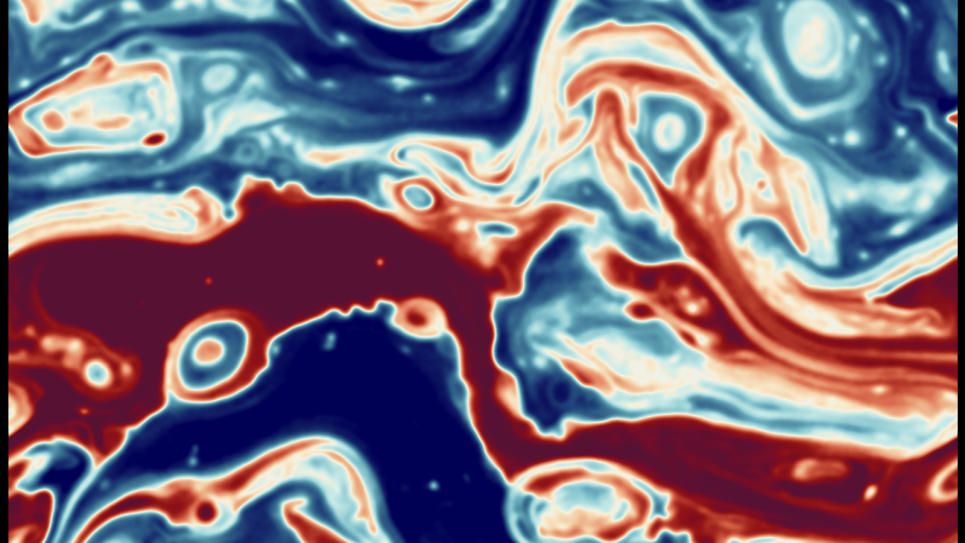
Caption: Supermassive black holes residing at centers of most galaxies, including our own Milky Way, are surrounded by turbulent plasma (a hot gas of charged particles) that swirls and spirals towards the center, drawn in by the black hole's extreme gravitational pull. The turbulence is driven by the rotating plasma's dynamic interaction with complex magnetic fields via the magnetorotational instability (MRI), which amplifies and distorts the magnetic fields and energizes the plasma, powering intense, potentially observable emission across the electromagnetic spectrum. Credit: Fabio Bacchini, University of Colorado